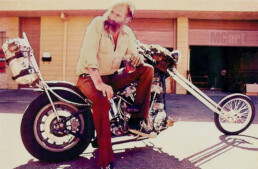Mr Long Fork - Dick Allen
[Editor's Note: You may not have heard of Dick Allen, unless you're a fan of old school chopper history, but he played a significant role in the development of the stretched chopper style made popular by Easy Rider. Not that he invented the style: Dick Allen's contribution was making it work, functionally, by sorting the physics of placing the front wheel of a motorcycle several feet beyond where anyone had placed it in history. The original longer-fork choppers of the late 1950s used rare Harley-Davidson XA forks (a military model with only 1000 built), which was 2" longer than a stock springer. That spurred a mania for increasingly stretched-out wheelbases in the 1960s, but most of those early machines, including the Captain America chopper in Easy Rider, handle like they have sandbags attached to the handlebars at low speeds. Dick Allen, with a little help from 'Fass Mikey' Vils at Ed Roth's Studios, figured out the required geometry to make any front fork handle with ease - with a minimum of 6" of trail. Dick Allen began selling his forks through Roth's Choppers Magazine, and other small manufacturers followed his lead - from Sugar Bear to Arlen Ness - making choppers safe for the streets and easy to handle. There's a wonderful interview with Mike Vils in 'The Chopper: the Real Story' about all this, including Mike's experience with Yamaha's technical team, who rode, examined, and measured his Panhead chopper, before pronouncing it safe, refusing to support a proposed ban on choppers in the USA, and then selling their own chopper-inspired models in the late 1970s and 80s. Enjoy Rich Ostrander's tale of Dick Allen.]

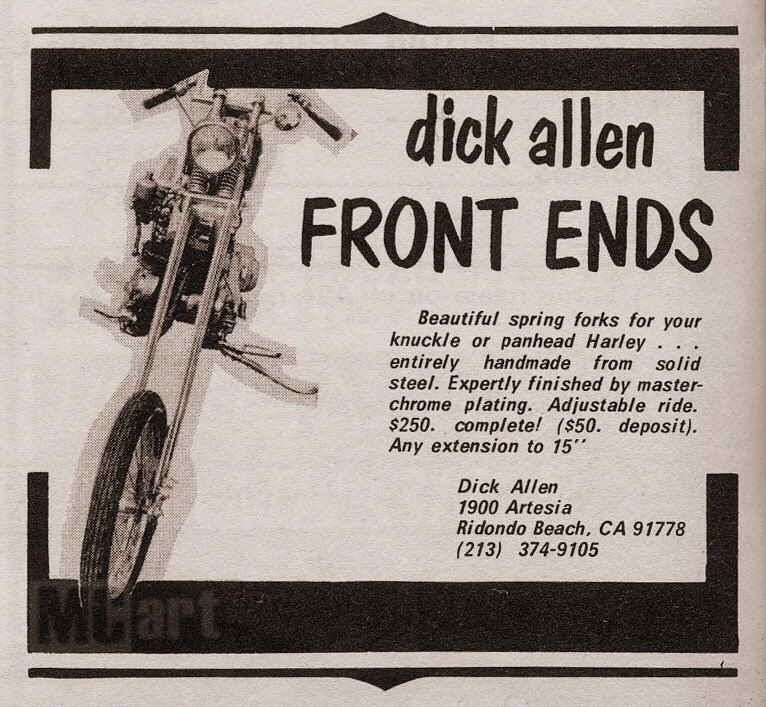
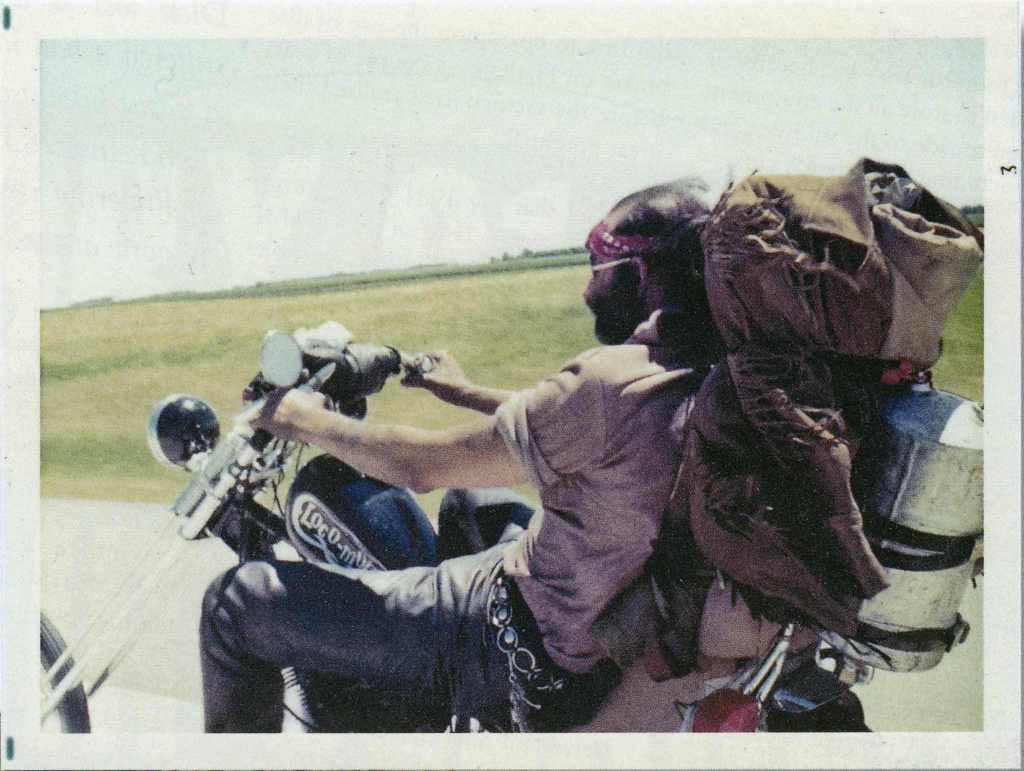
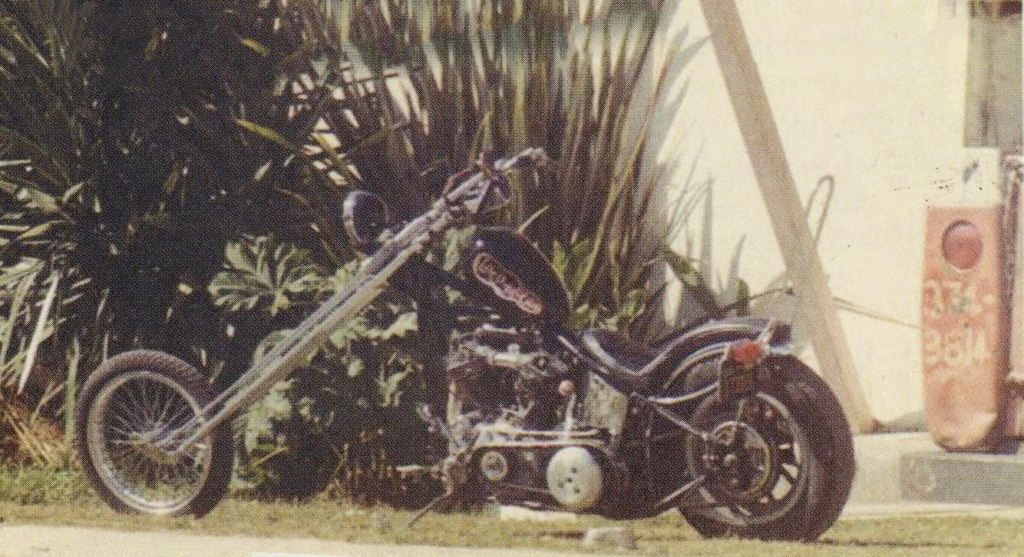
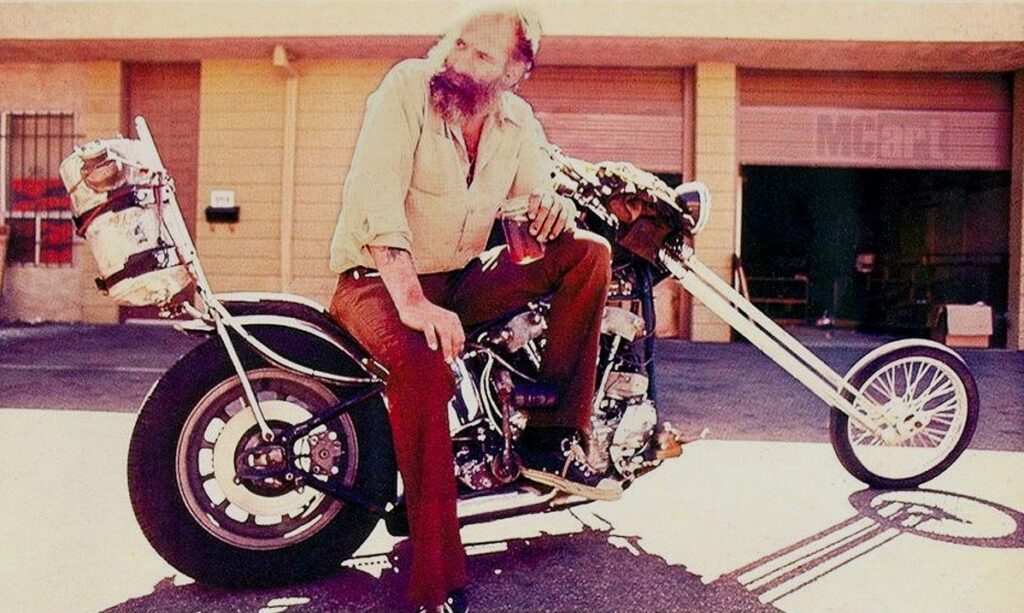

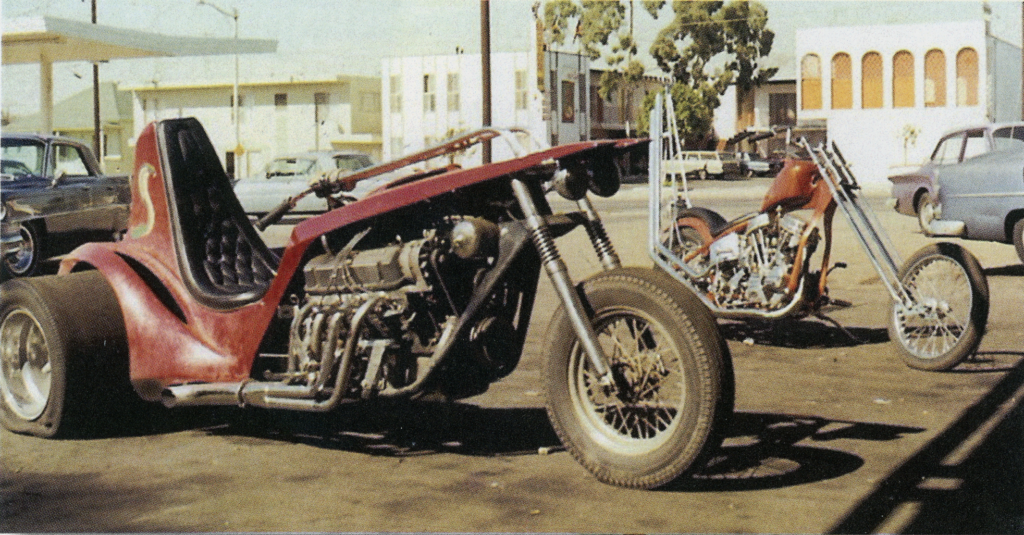
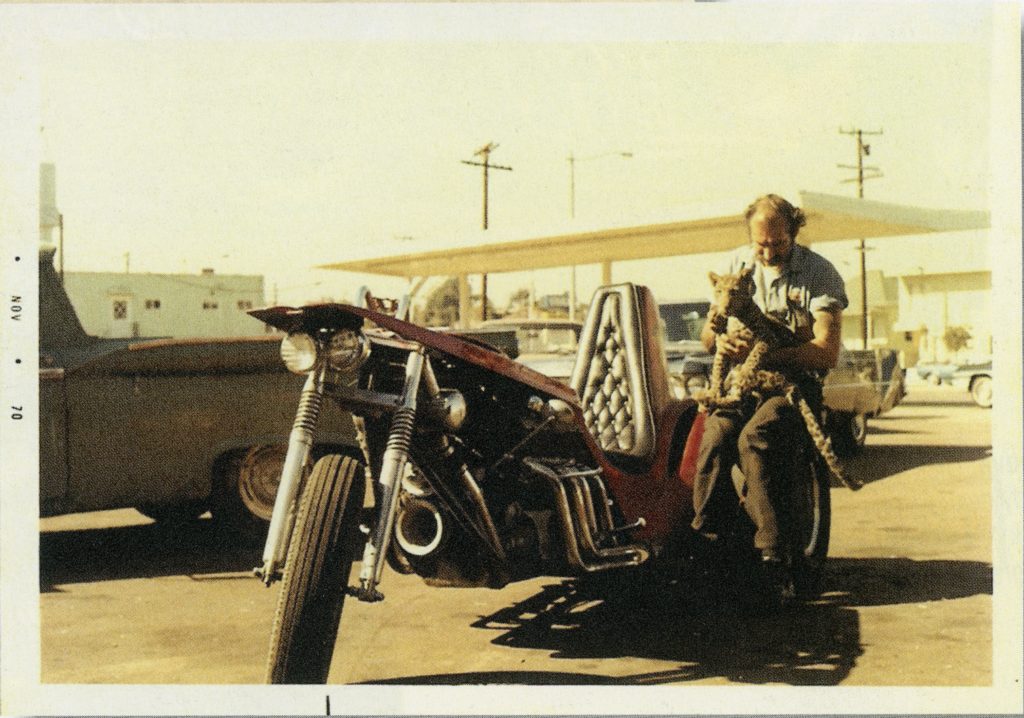
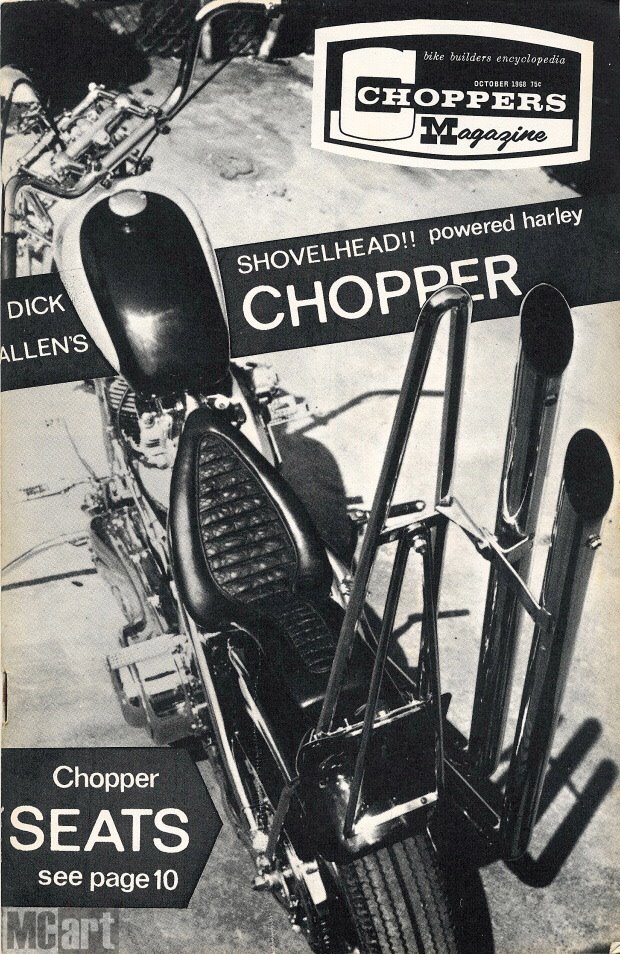
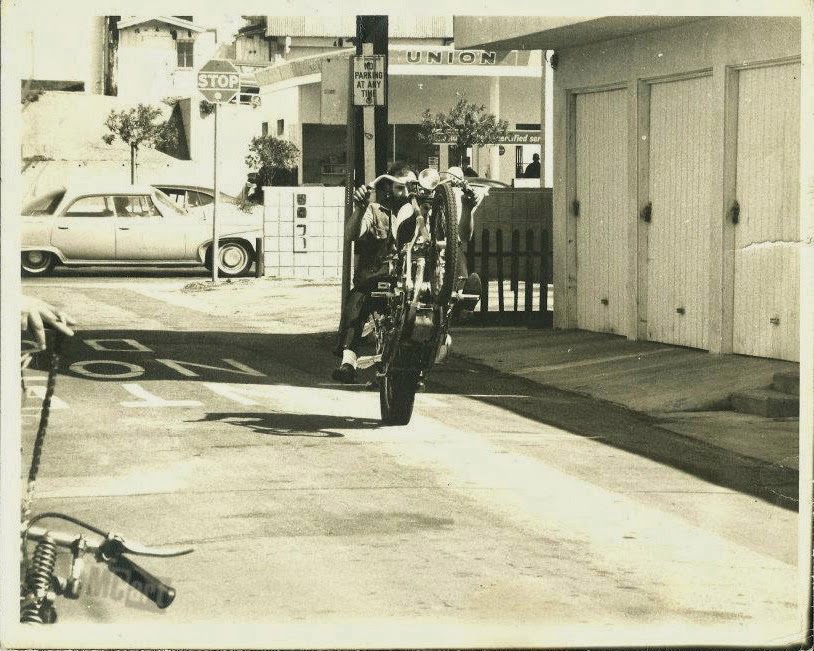

A Fine Line, Part 2: Ed 'Big Daddy' Roth
By Rich Ostrander
Much has been written about Ed Roth and his contributios to the 'kustom kulture'*, as it's been labeled by more recent admirers of that era's custom vehicle artists and builders. Ed's motorcycle phase only lasted about five years, but he never stopped constructing trikes. Ed's involvement with custom cars lasted longer; about ten years. His artistic talent revealed itself when Ed was at high school; after he graduated he joined the air force, then after being discharged he started pinstriping cars.














A Fine Line, Part 1: Von Dutch
In the early 1960s, I went to high school in SoCal, on the corner of Atlantic Blvd (south to north) and Artesia Blvd (east to west). That was the dividing line between Long Beach and Compton, to the north. Beyond Compton was Lynwood, then Southgate, Bell and last, Maywood. One block up from me on Atlantic (at Alondra), Dale's Donuts was famous for its giant donut sign on the roof, which was featured in a lot of TV shows and movies. If you drew a line around the area one mile east to west from there, going ten miles north to Slauson Blvd and Maywood, that zone would contain most of the artisans and shops that became icons of the 'Kustom Kulture' scene, as it was labeled in the mid-1980s [though the 'Kustom' tag was coined by George Barris while still in High School, ca.1941 - ed.]. Between 1950 and 1970 this area was the hotbed of vehicle customization in southern California, and by extension the whole nation, and the world.

So: George Cerny's shop was near Alondra and Long Beach Blvd in Compton, George Barris' shop was on Atlantic in Lynwood, Dean Jeffries' shop was next door to Barris, 'Big Daddy' Ed Roth's workshops were on Slauson in Maywood. Motorcycle-related shops included CB Clausen's shop in Southgate, which later moved down to Florence Blvd in Compton, not far from Jungle Jim's shop and Al Titus's in Lynwood, both on Atlantic. Most of the big names were within blocks of each other, if not actual neighbors.

For a teenager just getting his first car (a 1948 Ford) and starting high school in 1963, what more could you ask for? Most of these shops were just trying to make a living with their craft and talent, in the fairly new medium of car and motorcycle modification. Torch welding, lead-filling, speciality painting and aftermarket parts development kept them in business, and made their names known. Many of these shops became very successful, or even world famous in the case of Barris' Batmobile and Roth's Revell models. But I think those guys would have been puzzled by the 'hero' status given to them down the road, by folks who weren't there at the time.

Let's go back to yesterday and follow one of these characters through his rise to fame, even though he never wanted the reputation assigned to him by others, and was never interested in monetary gain. Kenny Howard initially learned the craft of signwriting when he was just ten years of age (1939), from his father Wally, who was a very accomplished sign painter and pinstriper. While he became an accomplished painter himself, Kenny always considered himself a mechanic and machinist first and foremost, and when he was 15 he went to work at George Beerup's motorcycle shop. The earliest photo of Kenny on a motorcycle was taken in 1946, with him perched on his magneto-fired Indian Scout, complete with Flanders handlebar risers, high 'bars, dual pipes, a chromed English tank, and an earlier Scout leaf spring fork.

In 1947, the year after that photo was taken, Howard started painting signs; he started earning money from pinstriping around 1950. He style was, of course, influenced by his father Wally, but his main inspiration was Tommy 'The Greek' Hrones from NorCal Bay Area. Like Kenny Howard, Tommy was a bike nut, and had various Harleys, Indians, and Triumphs. He's started pinstriping in the late 1920s, and closed his last shop in the mid-nineties. He was the originator of 'spits', or teardrops, on custom paint jobs.






Stay tuned for Part 2 of 'A Fine Line'; next time I'll look into Ed Roth's motorsickle days.


